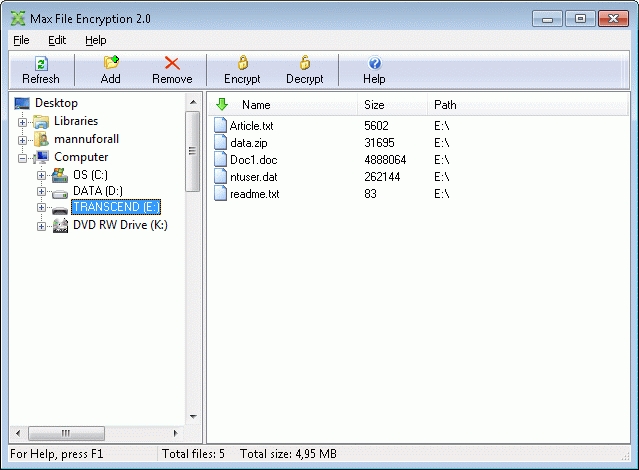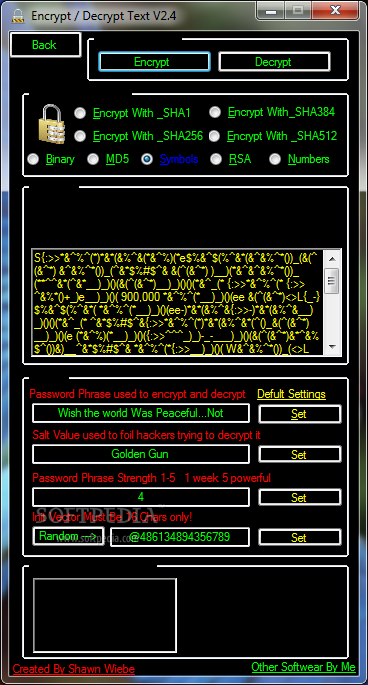
- #Macfort file encription for mac
- #Macfort file encription mac os
- #Macfort file encription install
- #Macfort file encription code
Without the key, you can’t make any sense of the information stored on the computer. Using the correct key, FileVault can unscramble data and make it easy to read again.
#Macfort file encription code
If you try to read the scrambled data, it will make no sense.īut, the scrambling is done according to a specific code and algorithm controlled by FileVault. To do this, FileVault scrambles data on the drive.
#Macfort file encription mac os
Put in simpler terms, it encrypts absolutely everything tied to Mac OS (or OS X on older systems). It encrypts the entire partition of a drive used for a Mac computer.
#Macfort file encription for mac
This all makes more sense when you understand what FileVault does and how it is done.Įssentially, FileVault is an encryption program for Mac computers. Minimal desktop area for productive work. Let’s get started! What Does FileVault Do? Modern workplace. So if you want to learn all about how FileVault affects your Mac’s performance exactly, then this article is for you. With older systems, it is possible for FileVault to use up resources to a point that general performance slows down across the Mac. Modern hardware can handle encryption a lot faster than older systems, and Macs encrypt by default now. With a modern Mac, FileVault typically does not impact performance at all. ICryptoTransform encryptor = encryption.CreateDecryptor() ĬryptoStream encryptStream = new CryptoStream(inStream, encryptor, CryptoStreamMode.Here’s everything about FileVault affecting your Mac’s performance: Public void Decrypt(Stream inStream, Stream OutStream) ICryptoTransform encryptor = encryption.CreateEncryptor() ĬryptoStream encryptStream = new CryptoStream(OutStream, encryptor, CryptoStreamMode.Write) Public void Encrypt(Stream inStream, Stream OutStream) Rfc2898DeriveBytes key = new Rfc2898DeriveBytes(password, (salt)) Įncryption.Key = key.GetBytes(encryption.KeySize / 8) Įncryption.IV = key.GetBytes(encryption.BlockSize / 8) There are many like it, but this one is mine." Where encryption is one of these: public class EncryptionHelper TargetType target= bf.Deserialize(outMs) as targetType Using (MemoryStream outMs = new MemoryStream())īinaryFormatter bf = new BinaryFormatter() Using (FileStream inFs = file.OpenRead()) FileInfo file = new FileInfo("SomeFile") You can decrypt to any stream you like, including straight to a memory stream. This was the first encryption code I wrote - be warned, although a good starting point to understand what's going on, static passwords and static salts are a bad idea! (thanks for highlighting this CodesInChaos)

Then in your code you can use any IO stream you want for both encryption: using(var encrypter = new Encrypter("path_to_key_set"))Įncrypter.Encrypt(plaintextStream, ciphertextStream) Īnd decryption: using(var crypter = new Crypter("path_to_key_set"))Ĭrypter.Decrypt(ciphertextStream, plaintextStream) PM> KeyczarTool.exe addkey -location=path_to_key_set -status=primary

(by having a separate key set file, it gives you the ability to rotating keys in the future and prevents you from accidentally hard coding something that should not ever be hard coded.) PM> KeyczarTool.exe create -location=path_to_key_set -purpose=crypt
#Macfort file encription install
Install in your project with nuget PM> Install-Package Keyczar -Pre I have been porting the Google Keyczar framework so such a high level library would exist for C#.Īnd it is usable for encrypting and decrypting io streams. The best practice is to use a high level encryption framework that hides these details ivs, salts, mac, comparisons, padding, key rotation, and while it's not improbable for high level frameworks to have the details wrong, when they do, they get found and fixed, the code snippets on stack overflow generally do not. Implementing Crypto deceptively easy, and actually rather tedious, there are a lot of details, and the details wrong are usually what's exploited security wise. Be forewarned though, you really should have a strong sense of regular IO and data streams before you attempt this though. Writer.Write("This is the encrypted output data I want to write") Įncryption is not for the faint of heart. In this block, you do your writing, and it will automatically be encrypted Using (StreamWriter writer = new StreamWriter(encryptedOutputStream)) Using (Stream encryptedOutputStream = new CryptoStream(dataStream, transform, CryptoStreamMode.Write)) Using (ICryptoTransform transform = encryption.CreateEncryptor(key, iv)) Using (TripleDESCryptoServiceProvider encryption = new TripleDESCryptoServiceProvider()) MemoryStream dataStream = new MemoryStream() īyte key = This is where the data will be written do. File.Encrypt is an OS feature but it sounds like really you want to control how the encryption is done.


 0 kommentar(er)
0 kommentar(er)
